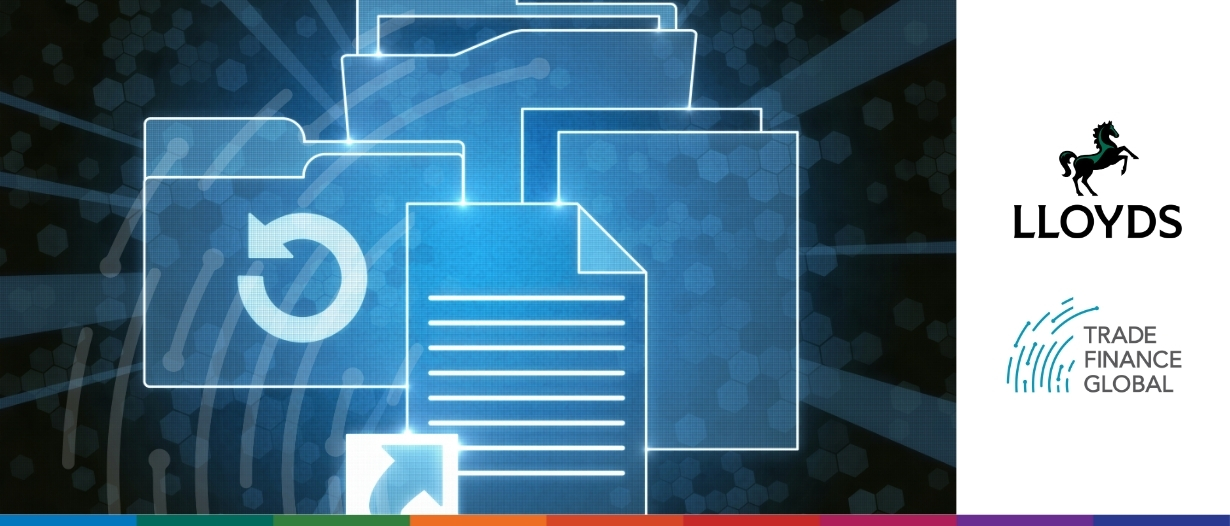Despite most industries witnessing digital leaps forward over the past decade, the world of trade has kept its focus on paper-based documentation. In fact, trade documents such as promissory notes, bills of lading, and performance bonds have remained relatively unchanged for centuries. Considering that the scale and sophistication of global trade have increased enormously since these documents were initially used by merchants, it’s now high time for an update.
After the recent trade bottlenecks caused by the pandemic, any improvements to the efficiency of international trade flows will represent a welcome change. The UK’s Electronic Trade Documents Bill (ETDB) proposes to cut processing times for electronic documents down considerably. But what do UK corporates need to know in order to prepare for this change?
Electronic documents, efficient trade
Introduced to Parliament in October 2022, the ETDB will make digital documentation legally recognised on an equal legal footing with paper documents and begin to pave the way to leaving paper-based trade in the past.
Not only is digital trade estimated to create £1.14 billion in net benefits over a 10-year period, but it is also intended to reduce bureaucracy for businesses, making efficiency savings worth £224 billion and increasing the capacity for innovation within companies.
However, the benefits are more than just economic. In any given year, it is estimated that more than 28 billion pieces of paper are exchanged in the course of trade transactions, leading to a considerable environmental burden.
By digitising said documents, it is expected that carbon emissions can be slashed by at least 10%. Furthermore, the fact that digital documents can reduce the risk of loss, fraud and error while increasing visibility and security means that they are set to play a key role in the future of trade.
Getting ready for the digital revolution
While the ETDB is likely to reduce admin costs, boost innovation, make it easier for businesses to import and export and even increase the participation of UK firms in international trade, there are some steps to take beforehand to ensure that your business is ready to take advantage of the change.
At Lloyds Bank, we’ve been spearheading the transition to paperless trade through ground-breaking initiatives such as launching the UK’s first-ever Digital Promissory Note. Here are our five top tips to make sure you’re prepared for paperless.
- Look at the currently available digital documents
The ETDB represents a monumental shift in the relationship between UK companies and the trade administration. However, some documents not covered by the bill are already available in digital form, with guarantees being one example.
To use paperless guarantees, first, make sure that your bank has the ability to offer them – at Lloyds Bank, we already issue one in four guarantees electronically. Second, check that your beneficiary is comfortable receiving guarantees in paperless form. If both points are catered for, then you’re ready to start going paperless. Get in touch with our team to find out more about how we can help you in this area.
- Understand your trade landscape
Look at your exposure to the change and consider which documents you already use. The upcoming legislation will cover eight key documents, including bills of exchange, promissory notes, bills of lading, and cargo insurance certificates. If you already use any of these documents, then you might be able to benefit from their more efficient digital counterparts.
Do remember that a number of these documents are combined with other shipping documents (e.g. commercial invoices) for presentation under other trade products such as Documentary Credits and Collections. Once you have examined your level of exposure/use of various instruments, consider whether there are more suitable forms of trade finance to use.
- Scrutinise your policies
Aside from the documents available, what do your internal policies say about the use of trade documentation? Take a look at your business’ position, and ask your counterparts to do the same. Primarily, check for any wording that might prevent you from working with digital documents and assess the underlying reasons why this may be the case, be it legal, compliance or procedural.
If you’re unsure, involve the relevant compliance teams to ensure that you can move ahead digitally. Lloyds Bank can help you navigate these conversations.
- Follow your bank’s digitisation journey
Not all banks are on the same trajectory in terms of digital transformation, and some are further along this path than others. Crucially, there is often more than one bank involved in a trade transaction, and for the transaction to take place in the digital sphere, all parties must have the capability to accommodate this legal change. Check with your bank to find out more about their capabilities.
- Consider digitising elements of the full transaction
From port authorities to customs, there are many other parties involved in a trade transaction. Do these parties still need to work on paper, or can these legs of your financial and physical supply chain also be digitised? Don’t forget that although it’s not currently necessary for the end-to-end process to be digital, such technology brings benefits in terms of speed and efficiency. Look at the processes you’re involved in, and consider which elements of your business could benefit from digitisation.
We would also advise you to talk with your logistics team and freight forwarder to ascertain their position on electronic bills of lading. While electronic bill of lading volumes are low at present, a number of the world’s biggest carriers have committed to going fully digital by 2030 and 25% digital by 2025.
The ETDB represents a significant opportunity for businesses in the UK, and Lloyds Bank are proud to be driving change through new digital initiatives in the field of trade.
Want to know more? You can contact the Lloyds Bank team at workingcapitalinnovation@lloydsbanking.com.
























